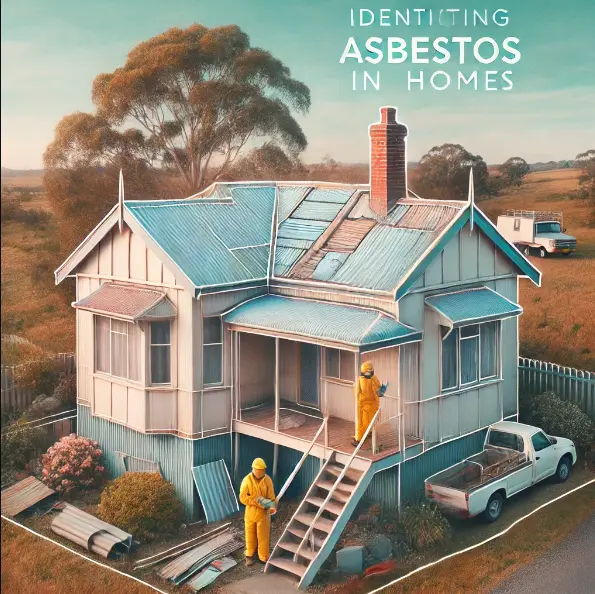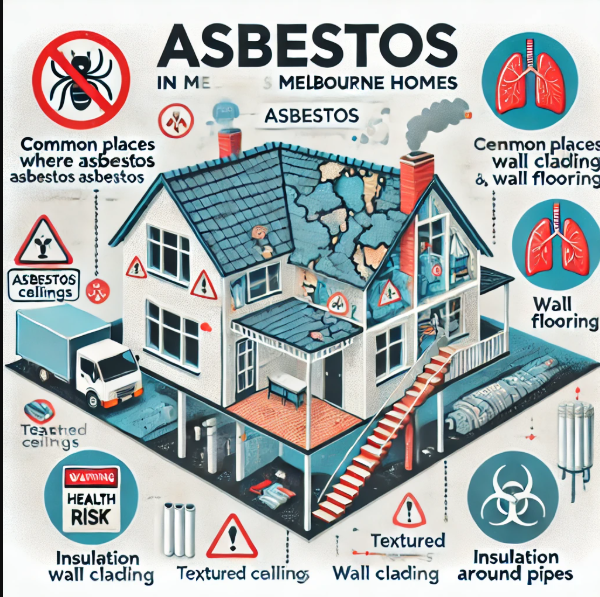Discovering asbestos during a renovation or strip-out project can be a concerning and overwhelming experience for homeowners. Asbestos is a hazardous material that was widely used in construction materials before its harmful effects were fully understood. If you’re renovating an older property in Melbourne—especially one built before 1990—you may come across asbestos-containing materials (ACMs), which can pose serious health risks if disturbed.
In this article, we will guide you through the essential steps to take if you discover asbestos during your Melbourne renovation. We will cover how to safely manage the situation, when to call in the professionals, and what to do next to ensure your renovation project continues without jeopardising anyone’s health.
1. Stop Work Immediately
The most important thing to do when you discover asbestos is to stop all work immediately. Disturbing asbestos-containing materials can release harmful fibres into the air, which can easily be inhaled. These fibres are microscopic and can remain in the air for long periods, posing serious health risks to anyone nearby.
If you are doing the renovation yourself, stop all cutting, sanding, drilling, or demolition work, and keep other workers, family members, and pets away from the area. If any materials are visibly damaged or disturbed, avoid contact and treat the area as hazardous.
2. Avoid Contact with the Asbestos Material
Once you’ve stopped work, avoid direct contact with the asbestos-containing materials. Do not try to move or remove the materials on your own, as disturbing them can cause fibres to become airborne. This includes materials such as:
- Textured ceiling coatings (popcorn ceilings)
- Fibro (fibrous cement) sheeting in walls or ceilings
- Pipe insulation and ductwork
- Vinyl floor tiles and linoleum
If the material is still intact and undamaged, it may not pose an immediate risk, but it should be treated with caution. Do not touch the material, and ensure that the area is isolated from other parts of the home.
3. Seal Off the Area
After stopping work and avoiding contact with the asbestos material, seal off the area to prevent any potential spread of asbestos fibres. If possible, close doors and windows to the affected room or area to keep air from circulating the fibres.
You should use plastic sheeting to create a temporary barrier around the area. This will help prevent anyone from accidentally coming into contact with the asbestos material or disturbing it further. Be sure to place warning signs around the sealed area to alert anyone nearby to the danger of asbestos exposure.
4. Contact a Licensed Asbestos Removalist
If you suspect that you have discovered asbestos during your renovation, the next step is to contact a licensed asbestos removalist. Only licensed professionals should handle the removal of asbestos-containing materials, as they are trained in the proper techniques to safely manage the material and minimise exposure.
A licensed removalist will:
- Assess the materials: They will confirm whether the material contains asbestos and evaluate the potential risks.
- Develop a removal plan: If asbestos removal is necessary, the professional will create a plan that complies with all safety and legal regulations.
- Contain the work area: They will set up proper containment measures to prevent the spread of asbestos fibres.
- Remove and dispose of the material: Asbestos waste must be properly packaged and taken to a licensed disposal facility to ensure it is safely handled.
Never attempt to remove asbestos yourself, as improper handling can lead to exposure and contamination.
5. Have the Area Tested for Airborne Asbestos Fibres
After the licensed asbestos removalist has completed the removal process, it is important to ensure that the work area is completely safe for re-entry. An asbestos assessor will conduct air quality testing to check for the presence of airborne asbestos fibres. This process involves collecting air samples from the work area and sending them to a laboratory for analysis.
If the test results show that no asbestos fibres are present, the area will be cleared for further work. If fibres are detected, the area will need to be re-cleaned and re-tested before it can be safely used again.
6. Ensure Proper Disposal of Asbestos Waste
Asbestos waste must be disposed of at an approved asbestos disposal facility. A licensed asbestos removalist will ensure that the waste is safely sealed and transported to the correct disposal facility. At these facilities, the asbestos-containing materials are processed in compliance with safety standards to prevent contamination and exposure.
It is illegal to dispose of asbestos waste in general rubbish or unapproved disposal sites. Always ensure that asbestos waste is handled and disposed of according to legal and safety requirements.
7. Keep Documentation of the Asbestos Removal
For your own peace of mind and to comply with legal requirements, it’s important to keep detailed documentation of the asbestos discovery and removal process. This may include:
- Asbestos testing reports that confirm the presence of asbestos.
- Asbestos removal plan created by the licensed removalist.
- Clearance certificate issued after air quality testing.
- Disposal receipts from the licensed disposal facility.
This documentation is important not only for your safety but also for resale purposes if you plan to sell the property in the future. Potential buyers may want confirmation that asbestos was safely removed.
8. Plan for Future Renovations
If asbestos-containing materials were found and removed during your renovation, it’s essential to plan for future work carefully. Even if all asbestos has been removed, the process of asbestos removal can often reveal other hazards or structural issues that need to be addressed. Always consult with professionals before undertaking any additional work, and ensure that any new renovations follow safety protocols to prevent disturbance to any remaining materials that could contain asbestos.
Discovering Asbestos During a Renovation Can Be Alarming
Discovering asbestos during a renovation can be alarming, but with the right steps, you can safely handle the situation and ensure the health and safety of everyone involved. Stopping work immediately, sealing off the area, and contacting a licensed asbestos removalist are the key first steps to managing the risk of asbestos exposure.
Remember, never attempt to remove or disturb asbestos yourself. Always work with licensed professionals who have the training, equipment, and expertise to manage the material safely and in compliance with legal regulations.
If you discover asbestos during your renovation in Melbourne, follow these steps, and rest assured that you are taking the appropriate measures to protect your home, your health, and those around you.
For further guidance on asbestos testing and removal, read our Complete Guide to Asbestos Safety and Removal in Melbourne Renovations.





